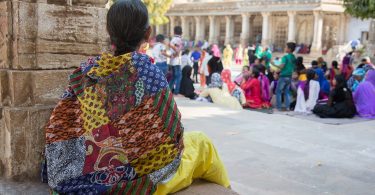Unless you have been living in a proverbial cave for the past week, you will be well versed in the trial of Anders Behring Breivik, the Norwegian man who massacred 77 people on the island of Utoeya
Unless you have been living in a proverbial cave for the past week, you will be well versed in the trial of Anders Behring Breivik, the Norwegian man who massacred 77 people on the island of Utoeya last July. Indeed, televisions, newspapers and magazines alike have been smattered with the truly chilling image of Breivik doing the Nazi salute; a sight which would be just at home in a fascist manifesto.
Despite Norway’s law prohibiting the death penalty, many feel this is the just response to such an unthinkable crime. When questions of Breivik’s mental health come into force, they argue that the only way to respond to his actions is to obliterate him entirely. On the other side comes the argument that to kill such a ruthless man would be to debase ourselves to his level. Despite individual responses to murder, they feel the state needs to operate at a morally superior level, setting a precedent.
It’s a controversial and exceptionally delicate issue. Indeed, either response comes at the price of someone’s ‘happiness’, so to speak. Werner Herzog’s recent documentary, Into the Abyss, deals with such issues of capital punishment. Herzog interviews all of those involved in the case of two young men who murdered three people in order to steal a car. He is decidedly against capital punishment, but nonetheless, depicts every point of view. And that is what makes the film such a harrowing watch. I found myself practically hating one of the inmates, who showed little to no remorse for his crime. At the same time, Herzog’s belief that, after global historical atrocities no-one has the right to take someone else’s life away, is undeniably affecting.
The initial scene depicts a priest who spends time with inmates of death row in the last moments of their lives. In an interview, Herzog described how he primarily felt the priest was too detached from his questions, and so asked him to describe an encounter with a squirrel. As he does so, we watch the priest- who begins his description in a wholly jolly demeanour- gradually crumble under the weight of his upcoming involvement with another inmate of death row. He describes an encounter on a golf course in which he almost killed two squirrels in a buggy. When the priest comes to the crux of the tale, it is apparent that he is struck by both the autonomy and powerlessness man respectively faces in the midst of death. And that is perhaps what is so troubling about the death penalty. Whilst it is representative of the ultimate agency of the state, it also represents its weakness; seemingly unable to overcome the ‘bad’ party, the state gives in to annihilation, choosing to bury its metaphorical head in the sand. Rather than acknowledging the fact that evil is undeniably present in the world, in a sense, it blocks it out, attempting to destroy it and thus deny it.
Of course, it’s not that simple. What is acceptable for one case is completely inapplicable for the case of another. Nor am I claiming to have the ‘answer’ to the ever-continuing question of life over death. Indeed, arguments of living in incarceration over dying will undoubtedly continue to plague generations where the death penalty still applies. Moreover, it is impossible to retain a static position in relation to the problem; nobody knows how their situation may change. What is ultimately frightening is the fact that we will never come to a resolute decision on the matter. Despite the fact of living or dying, if the governing body and the people cannot come to a resolution on the matter, what hope do we have of ever truly moving forward?








